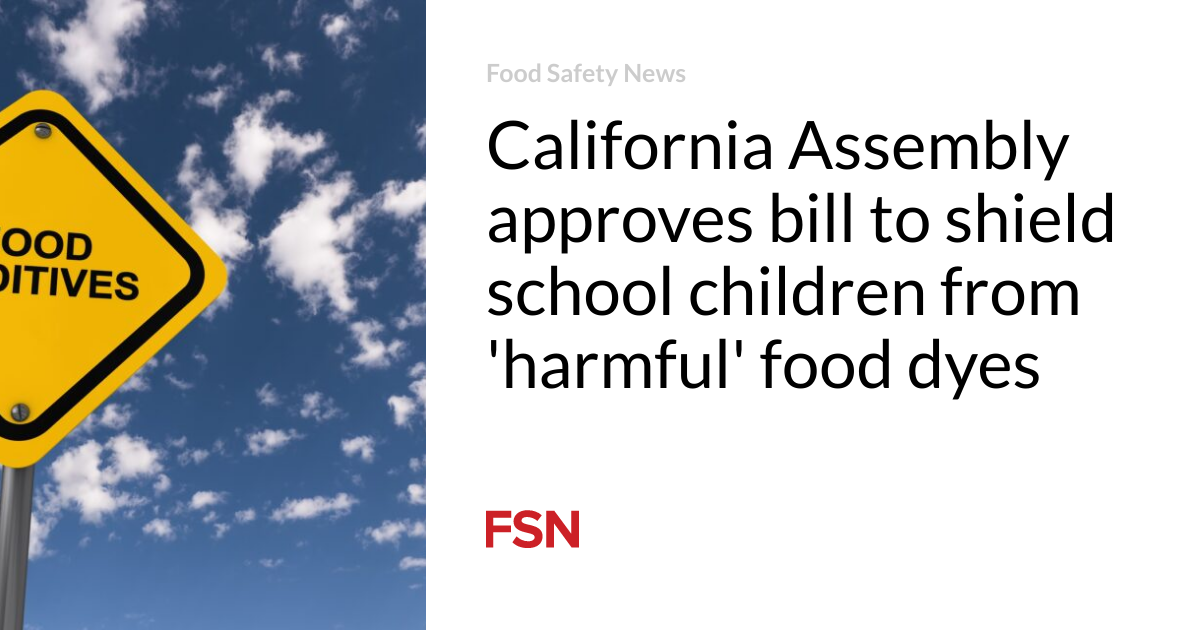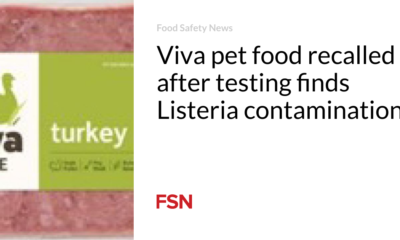Food
The California Assembly passes a bill to protect schoolchildren from ‘harmful’ food dyes

The California Assembly, where the current multi-state movement to ban certain food additives began two years ago, has taken action again; this time the focus is on California’s $1.6 billion school lunch program.
In its latest action, the California Assembly sent the Senate a bill that would ban foods containing seven specified food coloring additives (Blue 1; Blue 2; Green 3; Red 40; Titanium Dioxide; Yellow 5; and Yellow 6) from being offered beginning July 1, 2025, sold or otherwise provided to students by school districts, county offices of education (COEs), charter schools, and special public schools.
The 59-0 vote on Assembly Bill (AB) 2316 included a bipartisan measure to ban these six food dyes and titanium dioxide from food provided at any of the state’s public schools. Two major consumer and environmental groups support the bill: Consumer Reports and the Environmental Working Group. Twenty-one Assembly members did not vote when the measure reached the floor.
AB2316 prohibits listing as harmful that contains Red Dye No. 40, Yellow Dye No. 5, Yellow Dye No. 6, Blue Dye No. 1, Blue Dye No. 2, and Green Dye No. 3, and the food additive titanium dioxide.
The bill’s sponsor is Assemblyman Jesse Gabriel, D-Encina. He says titanium dioxide has been linked to DNA damage and damage to the immune system, and the dyes are linked to neurobehavioral problems in children.
“California has a responsibility to protect our students from chemicals that are harmful to children and can hinder their ability to learn,” Gabriel said. “As a legislator, parent and someone who has struggled with ADHD, I find it unacceptable that we allow schools to serve foods with additives linked to cancer, hyperactivity and neurobehavioral damage.”
“This bill will allow schools to better protect the health and well-being of our children and encourage manufacturers to stop using these dangerous additives,” he added.
Gabriel successfully authored the California Food Safety Act, which Governor Gavin Newsom signed into law last year, banning four additives in foods produced, delivered and sold in the state.
Other states, including Illinois and New York, have picked up California’s bans, including potassium bromate, brominated vegetable oil, propyl paraben and red dye No. 3.
Opposition to AB2316 came from the California Brands Association, which said, “This measure takes away from the comprehensive food safety and approval system for these dyes and would limit the availability of healthy and wholesome foods.”
It says the United States federal government has a comprehensive food safety process that reviews food additives and colorings. In addition, it said California has several laws that require removing chemicals from foods, applying warning labels and finding alternatives if those food additives are unsafe. The federal and state systems and many international scientific bodies have thoroughly reviewed these additives and they are still considered safe. The FDA continuously monitors safety information for all food and color additives and maintains data on the safety of all color additives approved in the US
In addition, the California Brands Association told the Assembly that the US FDA, the European Food Safety Authority (EFSA) and the WHO/FAO Joint Expert Committee on Food Additives (JECFA) have all concluded that the evidence suggesting associations between exposure to FD&C colors and adverse behavior in children and concluded that no causal relationship has been established and no additional risk management is warranted.
The California Office of Environmental Health Hazard Assessment found in 2021 that many food colorings and dyes, including the six dyes covered by AB 2316, leave some children vulnerable to behavioral problems and decreased attention.
Thousands of chemicals are authorized for use in food sold in the US. Many of the chemicals the Food and Drug Administration has reviewed have not been re-evaluated in decades, even as new science becomes available. For example:
- Titanium dioxidewhich is associated with damage to DNA and damage to the immune system, has not been assessed since 1966. In 2022, the European Union banned its use in food for sale, but it remains Allowed in food sold in the US
- Red food coloring no. 40 has not been assessed for health risks since 1971. Many studies show that it can pose a risk risk to brain development in children, hyperactivity and even cancer.
- Yellow dye No. 5 has been approved for use since 1931. The FDA affirmed the use of Good Manufacturing Practices in 1969.
- Yellow dye No. 6 was approved in 1931 and the FDA reaffirmed its use in 1986.
- Blue dye No. 1 has been approved for use since 1931. Its use was confirmed in 1969.
- Blue dye No. 2 was last approved in 1983.
- Green dye no. 3 has been authorized for use since 1931 and has not been reaffirmed
“These dangerous dyes should not be allowed in foods sold in schools because they put children at risk for hyperactivity and other neurobehavioral problems,” said Brian Rodholm, director of food policy at Consumer Reports. “Removing these harmful dyes from school foods will protect the health and well-being of California children.
Children have lower tolerance levels for chemical exposure than adults, and their developing bodies make them especially vulnerable.
“Why are foods with these toxic dyes served in schools?” asks Susan Little, EWG’s senior public affairs advocate in California. “We know they are harmful, especially for some children. We must protect this vulnerable group from exposure at school, where they eat meals and are expected to learn.”
Consumers often prioritize food chemical issues over other food safety issues. However, the FDA does not adequately regulate additives.
(To sign up for a free subscription to Food Safety News, click here.)













